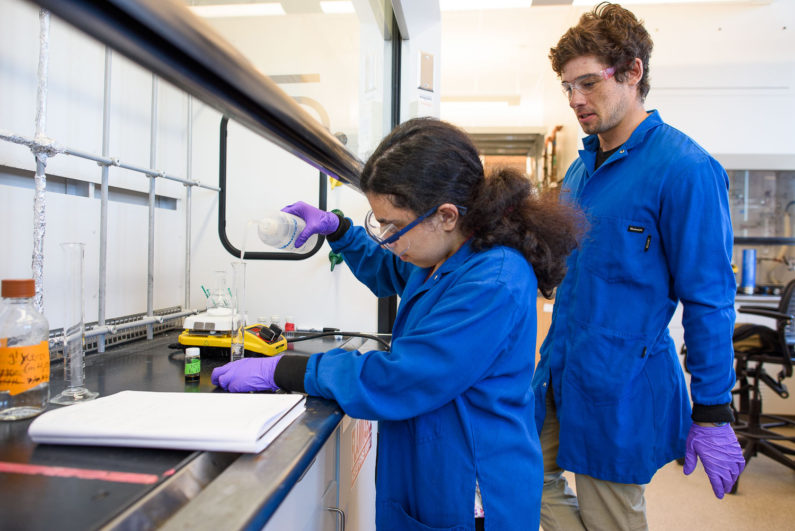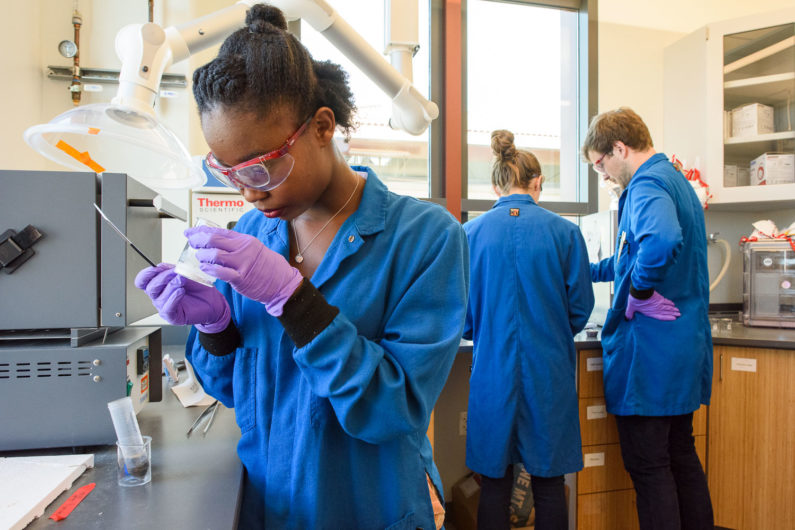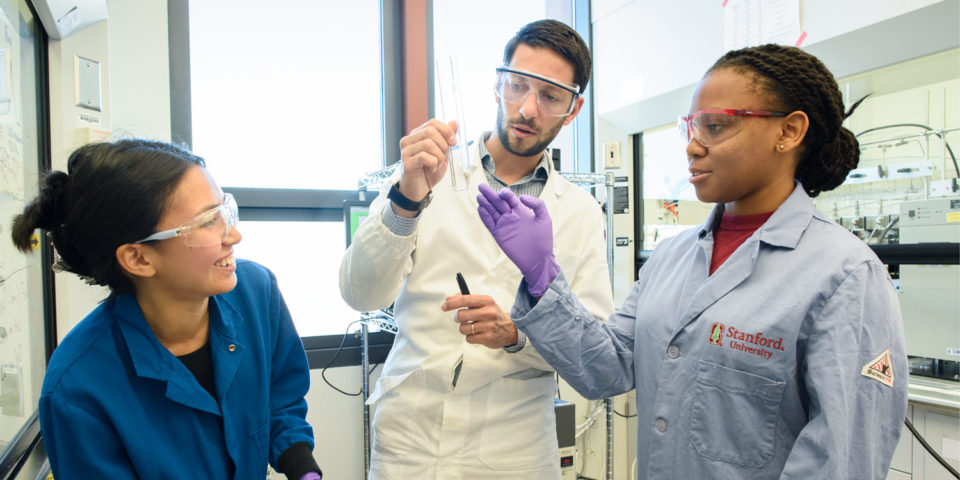Stanford faculty, students and staff win grants to advance diversity
Under a new program, Stanford has awarded 20 grants to support innovative initiatives that advance the diversity of the university community and foster inclusion.
After completing their summer research projects, five Stanford undergraduates will return to their hometown high schools in Texas, Nevada, California and Jamaica to share their passion for science and engineering with students and teachers.
Their travel will be funded under a new program, the Diversity Inclusion and Innovation Fund, which was established in 2017 to support initiatives that advance the diversity of the Stanford community and foster inclusion.
Matteo Cargnello, an assistant professor of chemical engineering who won the grant, said the hometown visits are designed to help increase diversity at Stanford “from the bottom up” by adding undergraduate voices to the chorus of people encouraging high school students to study science, technology, engineering and mathematics at the university.
Currently, the students are taking part in the Chemical Engineering Undergraduate Summer Research Program.
“We want our own students from diverse backgrounds to reach out to the communities where they come from and encourage other diverse students to apply,” said Cargnello, who will accompany the students on their hometown trips to Dallas, Reno, Los Angeles, Lakewood, California, and Kingston, Jamaica.

Stanford undergraduate Nadia Tahsini, left, will travel to her hometown of Los Angeles to share her passion for science and engineering with high school students and teachers. Also pictured is her mentor, graduate student Emmett Goodman. (Image credit: L.A. Cicero)
It was one of 20 inaugural grants awarded to faculty, students and staff under the program, an initiative of Stanford’s Diversity Cabinet. Its three co-chairs – Karen Cook, vice provost for faculty development and diversity; Harry J. Elam, Jr. , vice provost for undergraduate education; and Patricia J. Gumport, vice provost for graduate education – selected the grant recipients with input from other cabinet members.
They chose projects proposed by entities all over campus, including Stanford Medicine, the SLAC National Accelerator Laboratory, the Institute for Diversity in the Arts, Outdoor Education and the Jasper Ridge Biological Preserve.
A complete list of the grants, which ranged from $1,500 to $20,000, can be found here.
The new program is the outgrowth of a pilot program launched in 2015 by the Office of the Vice Provost for Graduate Education (VPGE). Since then, VPGE has awarded 55 grants for diversity and inclusion projects initiated by graduate students and postdoctoral scholars.
Cook, who is also the Ray Lyman Wilbur Professor of Sociology, said she was excited by the response to the new program. There were more than 60 proposals from all over the university for the first round of extended funding provided by former provost John Etchemendy and the current provost, Persis Drell.

Stanford undergraduate Dionne Thomas, left, will travel to her hometown of Lakewood, California, as part of a program to promote diversity. (Image credit: L.A. Cicero)
“The hope of the Diversity Cabinet was that this program would support innovative new efforts to encourage diversity and inclusive practices among those most directly involved in creating the kinds of environments that allow all students, staff and faculty at Stanford to thrive,” Cook said.
“The proposals provided clear evidence of the many people at Stanford who support the twin goals of diversity and inclusion and the many ways in which local cultures can be improved to foster these goals. There will be at least two more rounds of awards in the next two years and the Diversity Cabinet hopes to continue to offer funds in support of these types of activities and programs. All of the proposals, even those they were not able to fund the first time around, demonstrate the clear commitment of many in our community to making Stanford an even better place to live and work.”
Among the 20 grant recipients are:
The Global Child Health Program, which won a grant to design and implement a paid summer internship program for Stanford undergraduates, selected two students for the internship program, which began June 26.
The Institute for Diversity in the Arts (IDA), which has been working with a new generation of black students seeking a space to study and develop the black performing arts, won a grant to reestablish the Committee on Black Performing Arts, one of Stanford’s most important historic cultural programs. A-lan Holt, a poet and playwright who is the associate director of IDA, will lead the project to restore a key missing piece of the ecosystem that supports black students on campus.
The Markaz Resource Center won funding for its proposal, “Stronger Together: A Community Response to Islamophobia.” The student community center will offer a yearlong series of trainings and roundtables to help Muslim students develop the skills to respond to negative images, language and acts, and to help students, faculty and staff better understand the religious and cultural identities of Muslim students.
Yoshiko Matsumoto, a professor of East Asian Languages and Cultures, won a grant for her proposal, “InclusiviTea,” to hold quarterly tea gatherings that welcome all members of the Stanford community to share tea, sweets and conversation. The first gathering, which was held in May on Meyer Green, attracted undergraduates, graduate students, administrators and researchers. The next gathering will be held during autumn quarter.
Branislav Jakovljevic, an associate professor of theater and performance studies, won a grant to mount “Vital Signs,” a series of live performances, screenings and artist talks that will take place during the 2017-18 academic year. He invited Cassils, one of the leading trans artists in the United States and recipient of a 2017 Guggenheim Memorial Fellowship, to curate the series, which will pair artists from different generations each quarter. One of the pairings will feature Harry Gamboa Jr., a Chicano essayist, photographer, director and performance artist, and Xandra Ibarra, a queer Chicana performance artist.
The Diversity and First-Gen Office and Stanford SPARQ (Social Psychological Answers to Real-world Questions), a program of the Department of Psychology, won funding to create two digital toolkits: one that will allow organizations to replicate Stanford’s highly successful “Faces of Community” event and another that will allow users at Stanford and other organizations to implement the “fishbowl discussion” technique, which helps participants build bridges of understanding and empathy across cultural divides.

